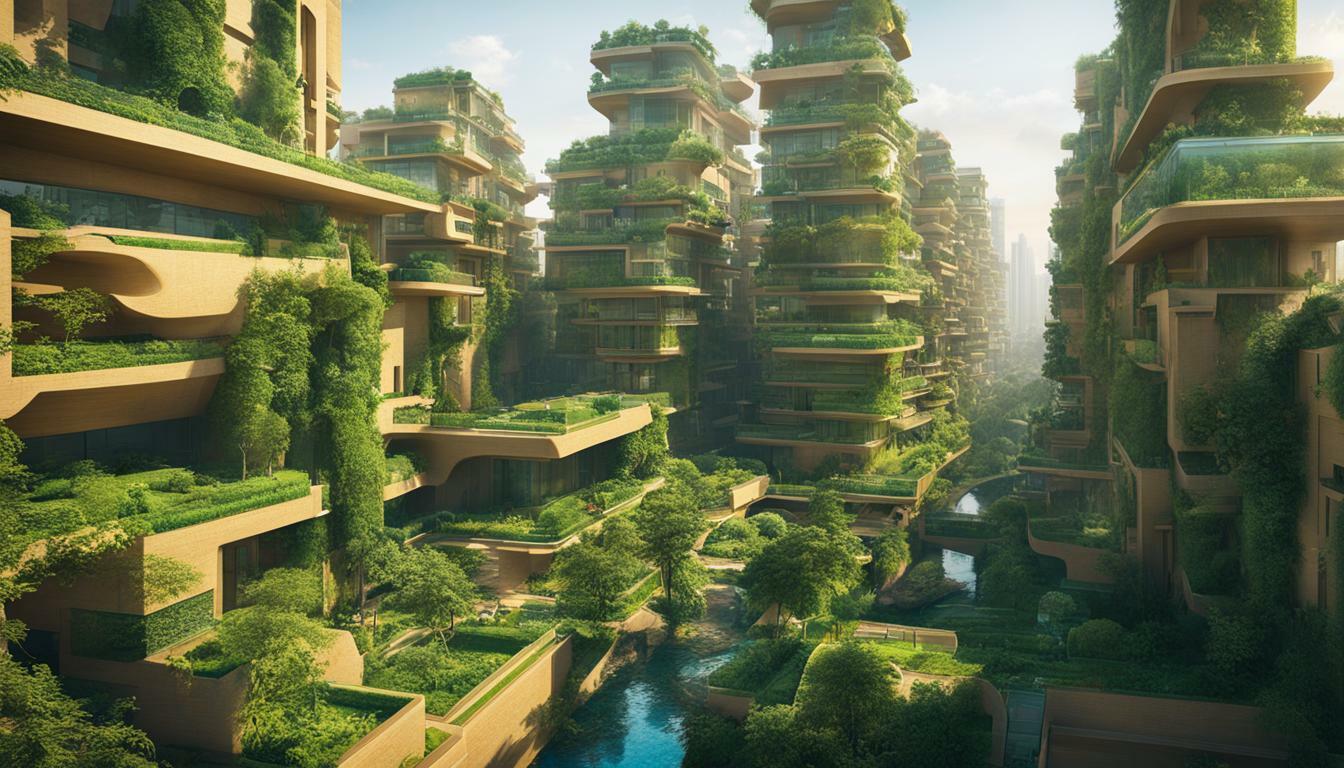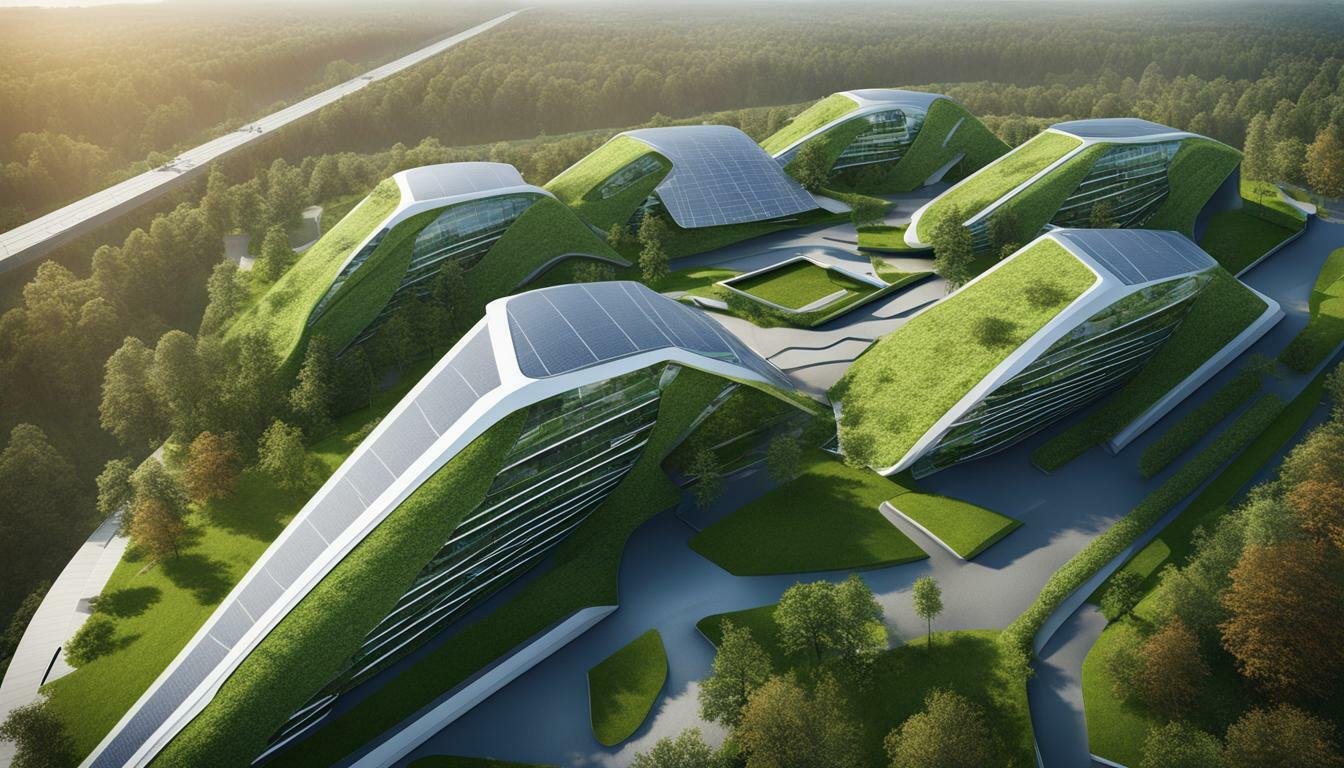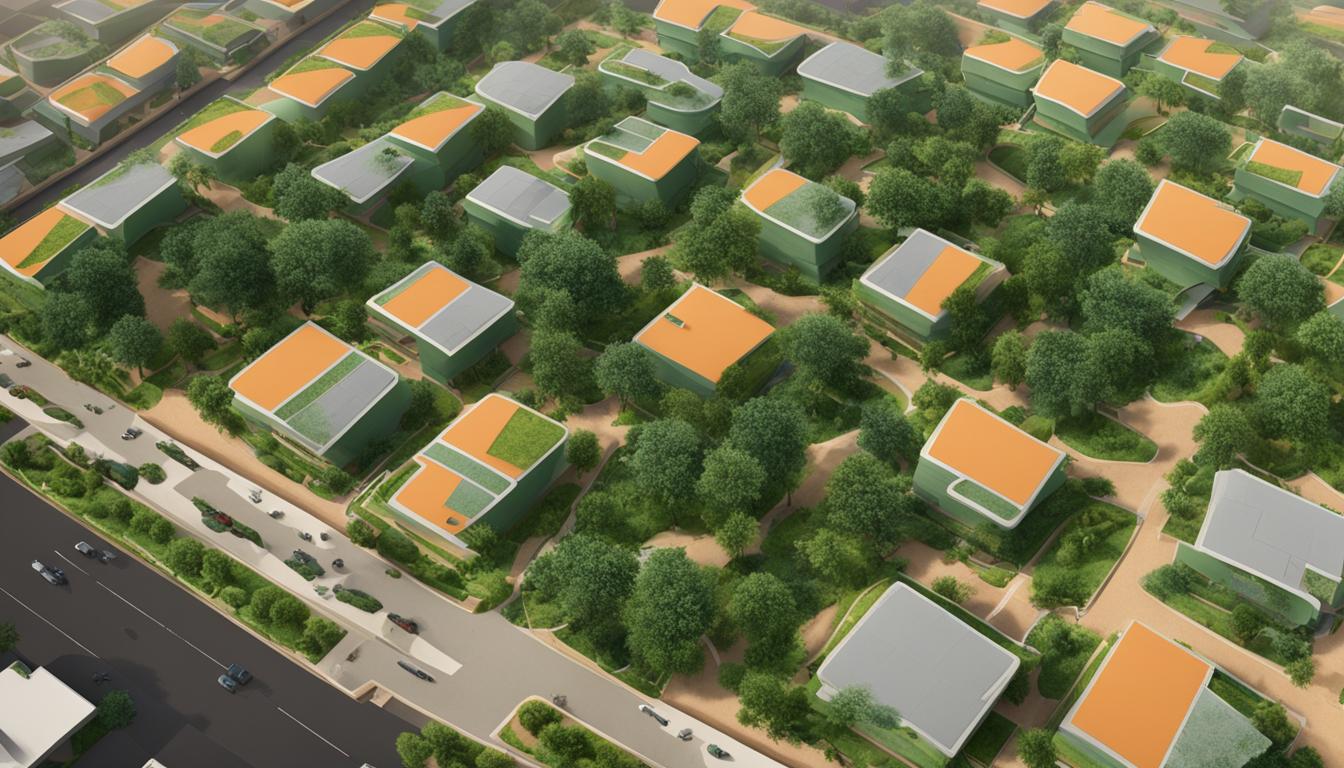Exploring Bhutan Green Building: Sustainable Future Ahead
Bhutan, a small landlocked country nestled in the Eastern Himalayas, is making great strides towards building a sustainable future through its green building initiatives. With a commitment to environmental conservation and sustainable development, Bhutan is not only preserving its unique cultural heritage but also pioneering innovative practices in green building.
Bhutan’s commitment to sustainability is deeply rooted in its philosophy of Gross National Happiness (GNH), which prioritises the well-being and happiness of its people and the environment. The country, often referred to as the “Last Shangri-La,” is known for its pristine forests, clean air, and breathtaking landscapes. Recognising the importance of preserving these natural treasures, Bhutan has taken concrete steps to promote green building practices.
Key Takeaways:
- Bhutan prioritises the well-being and happiness of its people and the environment through its commitment to Gross National Happiness.
- Bhutan’s notable green building projects, such as the Thimphu TechPark and Royal Thimphu College, prioritise environmentally sustainable practices.
- The Green Building Council Bhutan promotes sustainable construction practices across the country through the development of green building guidelines and certification systems.
- The adoption of green building practices in Bhutan provides economic benefits, contributes to the country’s goal of being carbon neutral, and promotes resilience to climate change impacts.
The Philosophy of Gross National Happiness: Bhutan’s Commitment to Sustainability
Bhutan’s commitment to sustainability is deeply rooted in its philosophy of Gross National Happiness (GNH), which prioritises the well-being and happiness of its people and the environment. GNH was coined in the early 1970s by the fourth king of Bhutan and has since become a guiding principle for the country’s development.
The philosophy takes a holistic approach to development, recognizing that economic growth alone does not guarantee happiness. Instead, it emphasizes the need to balance economic, social, cultural, and environmental factors to achieve sustainable development. GNH acknowledges that material well-being is important, but it should not come at the expense of social and environmental well-being.
Environmental conservation is an integral component of GNH. Bhutan’s constitution mandates that at least 60% of the country’s land must remain under forest cover, and the government has taken steps to ensure that this target is achieved and maintained. The country has also pledged to remain carbon neutral under its ambitious Climate Action Plan, which emphasizes the adoption of renewable energy sources and the reduction of greenhouse gas emissions.
Bhutan’s commitment to sustainability extends beyond environmental conservation. The country has implemented sustainable development practices in various sectors, including education, healthcare, and tourism. The government has invested in green infrastructure, such as public transportation and energy-efficient buildings, to reduce carbon emissions and improve the quality of life for its citizens.
Overall, Bhutan’s philosophy of Gross National Happiness and its commitment to sustainability set it apart as a leader in sustainable development practices. By prioritising the well-being of its people and the environment, the country is creating a sustainable future for generations to come.

Notable Green Building Projects in Bhutan
One of the notable green building projects in Bhutan is the Thimphu TechPark, the country’s first IT Park, which features sustainable design and construction practices. The park serves as a model for green building in Bhutan, incorporating renewable energy sources such as solar panels and utilizing passive design strategies to minimize energy consumption. The park’s infrastructure is also designed to preserve the surrounding green spaces, with trees and vegetation retained and integrated into the development.
Another impressive example of green building in Bhutan is the Royal Thimphu College, a pioneering educational institution that prioritizes environmental sustainability. The college’s campus is designed to minimize its ecological impact while providing state-of-the-art facilities for students. The buildings are constructed using locally sourced materials such as rammed earth and incorporate traditional Bhutanese architectural elements, blending harmoniously with the natural surroundings. The college also emphasizes water conservation and management, utilizing rainwater harvesting systems and wastewater treatment plants.
Green building practices are becoming increasingly popular in Bhutan, and the country’s construction sector is embracing sustainable building practices. The shift towards green building is driven by the economic benefits it offers, such as lower energy costs, improved indoor air quality, and increased market value. Furthermore, green building practices in Bhutan emphasize the use of locally available materials, reducing transportation costs and supporting local economies.
Sustainable building practices in Bhutan also emphasize the integration of renewable energy systems. The use of renewable energy sources such as solar, wind, and hydro power reduces reliance on fossil fuels, contributing to Bhutan’s goal of being carbon neutral. Additionally, energy-efficient design strategies, such as passive cooling and heating, are incorporated into construction projects, further reducing energy consumption and costs.
In summary, Bhutan is leading the way in promoting sustainable construction practices through its commitment to green building. Notable green building projects in Bhutan incorporate energy-efficient design, renewable energy systems, and the use of locally sourced green building materials. As a result, the construction sector in Bhutan is shifting towards sustainable building practices, driven by the economic benefits and the country’s focus on environmental conservation and sustainability.

The Royal Thimphu College: A Pioneering Educational Institution
Another significant green building initiative in Bhutan is the Royal Thimphu College (RTC), a pioneering educational institution that prioritizes environmental sustainability. The college’s campus is a testament to its commitment to sustainable development practices, with its eco-friendly architecture and use of green building materials.
The RTC was built with locally available materials such as rammed earth, which reduces transportation costs and supports local economies, while also minimizing the building’s carbon footprint. The college’s buildings incorporate traditional Bhutanese architectural elements, blending harmoniously with the natural surroundings and preserving the cultural heritage of the country.
The RTC also emphasizes water conservation and management, utilizing rainwater harvesting systems and wastewater treatment plants. The campus also incorporates energy-efficient design features, such as natural ventilation and passive cooling, which minimize energy consumption and reduce the college’s ecological impact.
The RTC serves as a leading example of sustainable development practices in Bhutan, demonstrating how educational institutions can prioritize environmental sustainability while providing state-of-the-art facilities for students. Its commitment to eco-friendly architecture and green building materials highlights the country’s dedication to promoting sustainable construction practices and creating a sustainable future for its people.
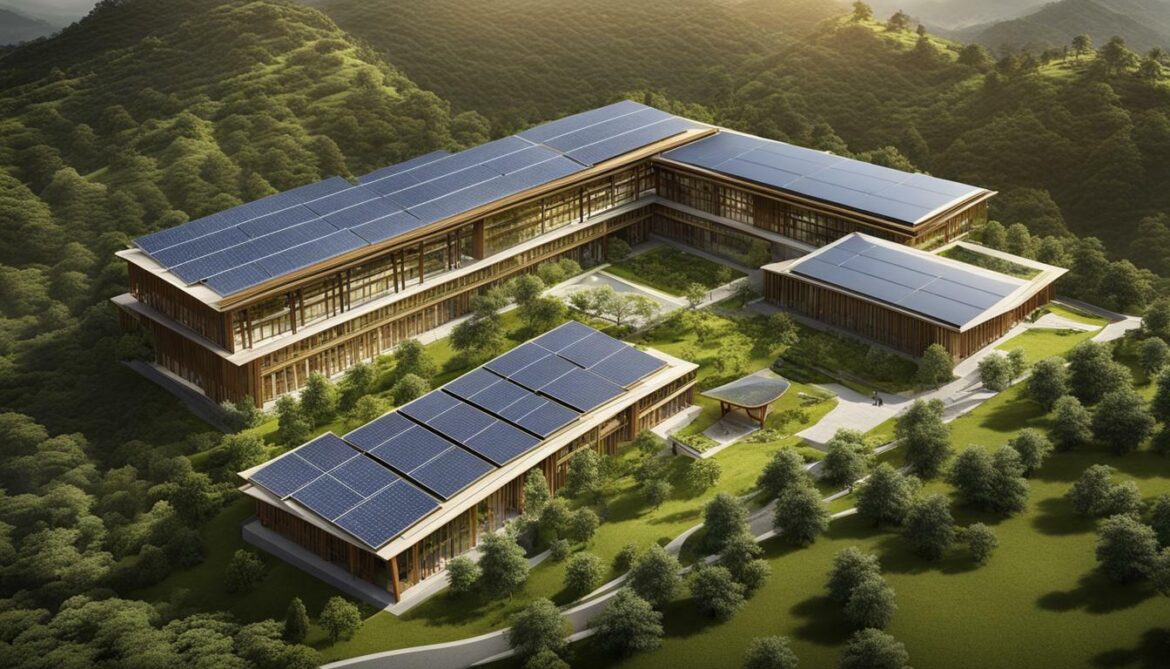
The RTC’s focus on sustainable development aligns with Bhutan’s overall commitment to environmental conservation and sustainable development. By prioritizing sustainable construction practices, Bhutan is setting an example for other countries to follow, demonstrating that economic development and environmental conservation can coexist harmoniously.
Government Initiatives: The Green Building Council Bhutan
Bhutan’s commitment to green building extends beyond individual projects, with the establishment of the Green Building Council Bhutan (GBCB) by the government. The GBCB is a non-profit organization that aims to promote sustainable construction practices and encourage the integration of green building guidelines across Bhutan. The council collaborates with stakeholders in the construction industry to develop green building guidelines suitable for Bhutan’s unique environment and culture.
The GBCB is involved in the certification of green buildings through its certification program, which assesses projects based on their adherence to green building guidelines. The certification program has helped to promote sustainable construction practices in Bhutan by recognizing and rewarding projects that meet green building standards.
In addition, the GBCB organizes training programs for architects, engineers, and contractors to enhance their knowledge and skills in sustainable construction practices. The training programs cover topics such as energy-efficient design, waste reduction, and renewable energy integration.
Furthermore, the GBCB conducts research on sustainable construction practices and advocates for policies that promote environmentally responsible construction practices. The council has been instrumental in formalizing green building regulations and standards in Bhutan, contributing to the country’s overall commitment to sustainability.
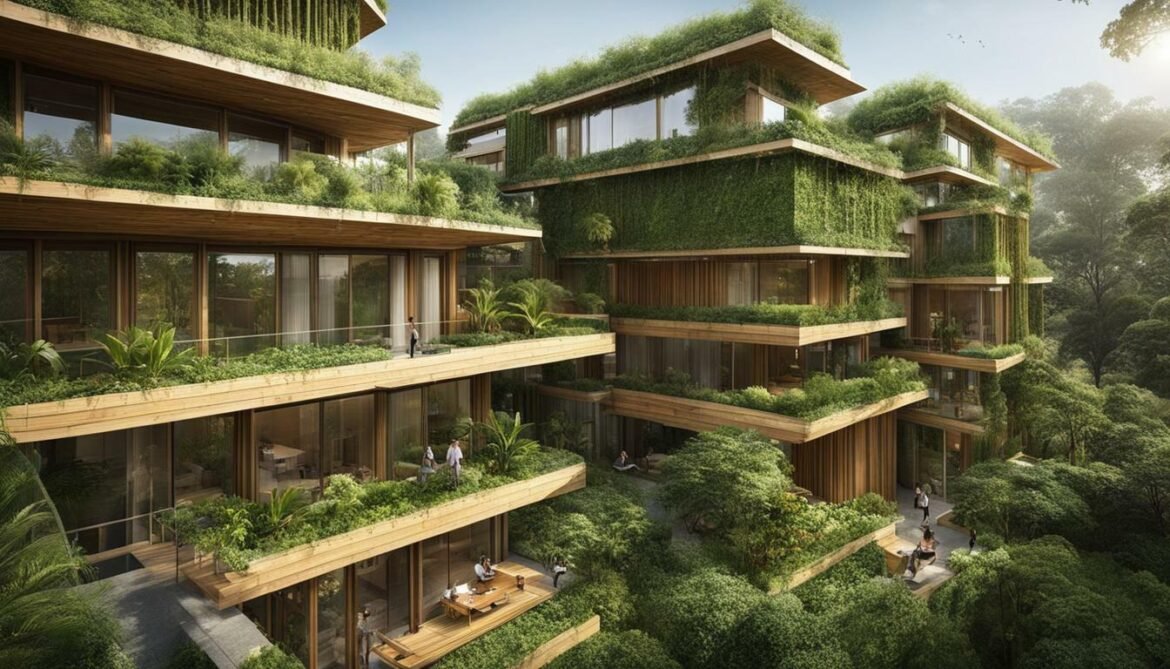
The green building guidelines developed by the GBCB focus on reducing the ecological footprint of construction while maintaining the cultural and aesthetic values of Bhutanese architecture. The guidelines emphasize the use of locally available materials, passive cooling, and heating techniques, and incorporation of renewable energy sources such as solar and hydro power. The GBCB also promotes the use of green building materials such as rammed earth, adobe, and bamboo, which have a lower environmental impact compared to conventional building materials.
The GBCB’s efforts towards promoting sustainable construction practices have not gone unnoticed. The council has received international recognition for its contribution to sustainable development and has been invited to share its experience and knowledge with other countries.
In summary, the establishment of the Green Building Council Bhutan is a significant step towards promoting sustainable construction practices and green building in Bhutan. The council’s efforts towards developing green building guidelines, certification programs, and training initiatives have contributed to the adoption of environmentally responsible construction practices in the country.
Economic Benefits and the Shift towards Green Building in Bhutan
The construction sector in Bhutan has also embraced sustainable building practices, with green building becoming a preferred choice for developers and investors. This shift is driven by the economic benefits of sustainable construction, such as lower energy costs, improved indoor air quality, and increased market value. Green building practices in Bhutan emphasize the use of locally available materials, reducing transportation costs and supporting local economies.
Beyond the economic advantages, green building in Bhutan contributes to the country’s goal of being carbon neutral. The integration of renewable energy sources, such as solar panels and hydro-turbines, decreases reliance on fossil fuels and reduces greenhouse gas emissions. Moreover, the use of green building materials and efficient building techniques further reduces the carbon footprint of construction.
Green building practices in Bhutan are driven by a strong commitment to sustainable development and environmental conservation. The adoption of renewable energy sources and efficient building techniques not only reduces the ecological footprint of construction but also enhances the quality of life for Bhutanese citizens. By prioritizing sustainable construction practices, Bhutan is building a greener future for generations to come.
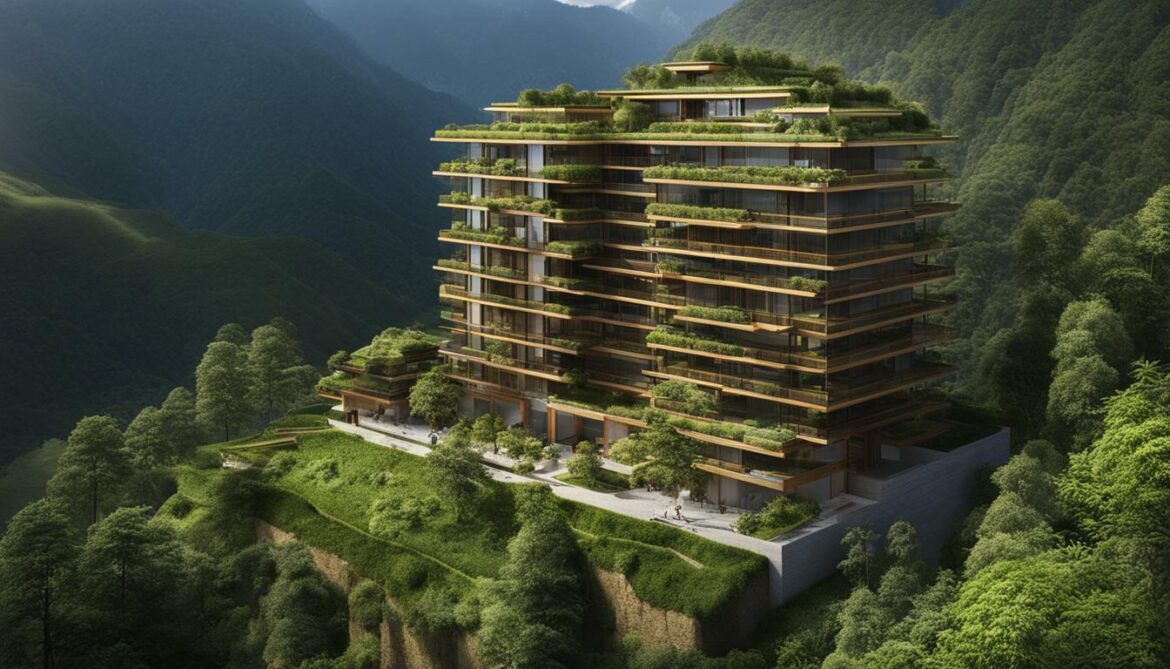
As green building practices become more widespread in Bhutan, the government has taken steps to support the industry. The Green Building Council Bhutan (GBCB) was established to promote sustainable building practices through education, certification, and advocacy. The GBCB works with architects, engineers, and contractors to develop green building guidelines and certification systems, providing a benchmark for sustainable construction in the country.
The shift towards sustainable construction has been embraced by the private sector in Bhutan, with developers and investors recognizing the economic and environmental benefits. The government’s commitment to sustainable development and climate action has created a favourable environment for green building, with policies and regulations supporting the adoption of sustainable construction practices.
Overall, green building in Bhutan has gained momentum and is rapidly becoming a preferred choice for developers and investors. The shift towards sustainable construction practices has enabled the country to reduce its carbon footprint, promote local economies, and enhance the quality of life for its citizens. As Bhutan continues to embrace sustainable development, green building will remain a vital component of its efforts to secure a sustainable future.
Conclusion
In conclusion, Bhutan’s focus on green building is an exemplary model for sustainable development. The country’s philosophy of Gross National Happiness prioritizes the well-being of its people and the environment, which has led to its commitment to green building and environmental conservation. Notable green building projects such as the Thimphu TechPark and the Royal Thimphu College incorporate sustainable design and construction practices, utilizing renewable energy sources and local building materials. The government’s establishment of the Green Building Council Bhutan and the construction sector’s preference for green building practices further promote sustainable construction, providing economic benefits and reducing the ecological footprint. Bhutan’s efforts to combat climate change and remain carbon neutral are also supported by its green building initiatives. Bhutan is indeed paving the way for a greener and brighter future through its strong emphasis on sustainability and green building.
FAQ
Q: What is Bhutan’s commitment to green building?
A: Bhutan is deeply committed to green building, which focuses on sustainable construction practices, eco-friendly architecture, and the use of green building materials.
Q: How does Bhutan prioritize sustainability?
A: Bhutan prioritizes sustainability through its philosophy of Gross National Happiness (GNH), which emphasizes the well-being of its people and the environment, leading to initiatives for environmental conservation and green infrastructure.
Q: Can you give examples of notable green building projects in Bhutan?
A: Yes, notable green building projects in Bhutan include the Thimphu TechPark, known for its energy efficiency and waste management practices, and the Royal Thimphu College, which showcases sustainable construction and eco-friendly architectural elements.
Q: What role does the Green Building Council Bhutan play?
A: The Green Building Council Bhutan promotes sustainable construction practices by collaborating with professionals in the industry to develop green building guidelines and certification systems, encouraging the integration of renewable energy.
Q: How do economic benefits influence the shift towards green building in Bhutan?
A: Green building in Bhutan offers economic benefits such as lower energy costs, improved indoor air quality, and increased market value. It also supports local economies through the use of locally available materials and reduces reliance on fossil fuels by integrating renewable energy sources.






